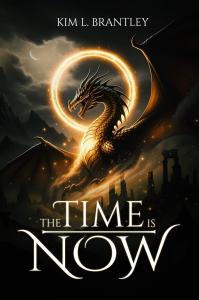Kim L. Brantley Transitions Career Path After Persistent Vision Leads to Novel Writing
Former Director of Public Works brings scientific precision and public service insights to contemporary fiction.
CHARLESTON, SC, UNITED STATES, October 17, 2025 /EINPresswire.com/ -- An image appeared in Kim L. Brantley's mind one ordinary afternoon. It was specific, vivid, and insistent. Days passed, then weeks, but the image remained. She tried to ignore it. She couldn't. Eventually, she understood what it wanted: to become a story - one that would later evolve into her debut novel, The Time is Now.Brantley had never planned to write novels. Her career had been built on different ground. She studied Environmental Science and Geology, then spent years as Director of Public Works for a small municipality. Her days involved infrastructure, budgets, community meetings, and the concrete problems of keeping a town running. Writing fiction seemed like something other people did.
But that image wouldn't leave. So she began writing, not because she dreamed of being an author, but because she needed to understand what the vision meant. The process surprised her. The skills she had developed over decades in science and public service turned out to matter. Observation. Pattern recognition. Understanding how small decisions create large consequences. These abilities, honed through years of environmental work and municipal management, shaped how she built stories.
Brantley writes with the precision of someone trained to notice details. Her scientific background taught her to look closely at the world, to ask why things work the way they do. That curiosity appears in her fiction. Characters have reasons for their actions. Settings follow internal rules. Plot developments connect to what came before. Nothing feels arbitrary.
Her time in public service also left its mark. Running a Public Works department means dealing with competing interests, limited resources, and the gap between what people want and what's actually possible. It means listening to residents who see the world differently and finding solutions that serve everyone, even imperfectly. Those experiences show up in her writing - particularly in her follow-up novel, Time Has Changed, where Brantley explores human choices and consequences through a deeply realistic lens.
What makes Brantley's journey notable is not just the career change, but how her previous work enriches her current one. Many writers draw from personal relationships or historical events. Brantley draws from understanding ecological systems, geological time, and the practical challenges of municipal governance. The result is fiction that feels grounded even when exploring imaginative territory.
She approached learning to write the same way she approached her scientific work: seriously and methodically. Recognizing that enthusiasm alone wouldn't be enough, she studied with screenwriting coaches. She understood that storytelling has techniques that can be learned and practiced. This commitment reflects a scientist's mindset. Natural talent matters, but so does rigorous study.
Writing became more than a new interest for Brantley. It expanded how she engaged with the world. Her years managing public works taught her to consider multiple viewpoints, to recognize that most situations are more complicated than they first appear, and to understand that good solutions often require compromise. These insights inform characters who feel real because they carry the same contradictions and complexities that actual people do.
Her geological training influences how she builds fictional worlds. Geology teaches that landscapes have history. Environmental science shows that systems interconnect in ways that aren't always obvious. Brantley applies these principles to storytelling. The worlds she creates feel like places with depth and history, even when readers only see a small piece of them.
Brantley's story matters because it challenges assumptions about who becomes a writer and when. She didn't start young. She didn't major in creative writing. She didn't always know this was where she'd end up. But her varied experience made her a better writer than she might have been if she'd followed a more traditional path. The years spent doing other work gave her something to say - stories she continues to explore in The Time is Now and Time Has Changed.
Her scientific and public service background also shapes what she values in storytelling. She sees fiction as serving a purpose beyond entertainment. Stories can help readers see familiar things in new ways. They can explore questions that don't have easy answers. They can offer both escape and insight. These are the goals that guide her work.
For readers looking for fiction that reflects thought and care, Brantley's books offer something distinctive. They carry the mark of someone who spent years solving real problems, understanding complex systems, and learning how communities function. They also carry the mark of that original vision, the one that appeared uninvited and insisted on being heard.
The image that started everything has become several books now - including The Time is Now and Time Has Changed. But Brantley still writes the same way she began: with attention to detail, respect for complexity, and a scientist's commitment to getting things right. She brings her whole professional life to the page, and the result is fiction that benefits from her particular way of seeing the world.
Natalie Jhonson
Authors Publishing House
+1 855-624-0155
email us here
Visit us on social media:
Instagram
Facebook
TikTok
Legal Disclaimer:
EIN Presswire provides this news content "as is" without warranty of any kind. We do not accept any responsibility or liability for the accuracy, content, images, videos, licenses, completeness, legality, or reliability of the information contained in this article. If you have any complaints or copyright issues related to this article, kindly contact the author above.


